IndiaWilds Newsletter Vol. 6 Issue IV
River Linking – A Colossal blunder
The heat and dust raised by the high voltage campaigning in the Indian elections sees many promises to undertake future projects which are supposed to be the panacea of all ills afflicting the Indian economy. No experts care to raise their voice about some of these unscientific claims, perhaps due to fear of online assault by paid trolls or due to sheer indifference of the media to discuss anything issue based.
One such project which had caught the imagination of the previous NDA (National Democratic Alliance) Government is the River Linking programme which has come back to circulation again in this election.
Ever since Shri Atal Bihari Vajpayee’s dream Golden Quadrilateral project of connecting the four metros and other road building projects appeared to give a fillip to the economy (apart from the side effects of fragmenting wildlife habitats), “Big is Better” is the mantra. Every body wants to announce a grand scheme which can catch the imagination of the voting public. Unfortunately the impact of inter-linking rivers on the environment is forgotten.
One of the major causes of death of rivers and their ability to heal is because of loss of water due to diversion of water through canals for domestic, industrial and agricultural uses as well as creation of artificial barriers like dams. With the industrial and domestic effluents continuing to get discharged into the rivers, the situation has become perilious and most of our rivers are so polluted that their waters are not fit enough for human consumption according to the current pollution control board norms.
In this scenario, when we decide to divert the water of the rivers through inter-linking with other rivers, the capacity of the original rivers immediately reduces. It thus impacts everybody who used to depend on this rivers, people and wildlife alike.
Impact on riverine ecosystem:
Each river has got flora and fauna which has developed and remains in a state of equilibrium due to the unique nature of the river, its origin, its nutrients, quality of water, the various creatures big, small and microscopic and their complex web of inter-relationships that have developed over the several thousands of years if not more.
The existing seasonal rivers have their flora and fauna that are adapted to the unique riverine ecosystem of that river. Their breeding cycles, creation of dwelling places for example digging holes/tunnels in rivers, laying eggs in sand bars of rivers etc are dependent on the volume of water flowing in the river in various seasons. When a seasonal river is linked with another through a canal and water flows in, this balance goes for a toss. Many flora and fauna are not going to be able to adapt to such sudden change in their habitat.
There are many species who survive on the turbidity of the river, floating sticks and other debris will find it difficult to survive when the water level suddenly goes up or when the water becomes still and deep due to construction of dams and canals. Migration of fish and other aquatic species will also be stopped.
The linking of rivers will also result in bringing in new species from another river that are alien to this river. This will result in sudden extermination of many species, some of them would be locally exterminated, and some may become extinct forever. With such extinctions the richness of our biodiversity is lost, there is imbalance in the entire ecosystem, the result of which would be felt by people. And worse, due to lack of research, we may not realise the cause and effect relation at all.
Flawed Premise:
The armchair experts say that inter-linking of rivers is like shifting water from one bottle to another and will be done based on need. So when there is floods in one river, the water will be diverted to the other river. However, these experts don’t realise that when there is drought, it impacts most parts of the country and monsoon rains also hits most of the country around the same time. So it is never the case of one river having plenty of water and the other less. So it is surprising that the proponents of river linking are unable to use their common sense to understand that this premise of linking of rivers is flawed.
Silting kills dams:
Our farmers based on their traditional knowledge know that rivers when in spate, bring along rich nutrients and deposit in the flood plains. This enhances the fertility of our soils and gives rise to bumper crops after floods. One who lives in sync with nature’s rhythms, manages to make the most of it. Unfortunately, in our endeavor to “tame” the rivers, we have created dams.
However, our planners didn’t realise that if the river can’t deposit the silt in our fields during flooding, then it has to deposit it elsewhere. And precisely that is what is happening. The silt is now deposited in our dams reducing their water carrying capacity as well as effectiveness. The cost of dredging of silt and maintain the effectiveness of the dams will be a massively costly affair. The loss of naturally deposited silt on our agricultural lands will reduce our agricultural productivity. Ofcourse it is another story that, the synthetic fertilizer lobby has moved in to sell their fertilisers and poison our fields and benefit from the massive subsidies given by the Governments.
A cursory look at the efforts that has gone in since the British days to create many canals and dams to tame the Kosi river and the failure of all such efforts may prove to be illuminating to the proponents of inter-linking of rivers. In this era of rapid climatic events induced by global warming, the rains, drought and floods have become unpredictable. So the game of draining excess water from one to fill another, which appears to be a simplistic solution to the uninitiated, is actually going to be a colossal blunder.
Seepage, Evaporation and Distress:
The inter-linking of rivers will also result in lot of evaporation of water. There will also be lot of seepage. The seepage of water near human habitations and agricultural fields will bring in vociferous demands from the people to maintain those canals and pipelines. When our municipal authorities are unable to control water wastage from pipelines in our urban areas, controlling seepage from these canals and pipelines is simply an impossible situation. So apart from wastage of water, it has the potential to create unrest in many places.
Vulnerability to Terror Attacks:
Study of traditional chinese warfare theories throws up many examples of creating artificial bunds in streams and exploding those to wash away enemy soldiers during war. We can’t rule out such a situation where similar terror attack can cause massive impact on lives and property. So it would be a tall task to monitor such places. Do we have the money, ability and will power to do it?
Salinity ingress impacts agriculture:
Rivers meet the sea and the flow of fresh water balances the ingress of saline water inwards. When the flow of water is diverted from one river to another, the quantum of discharge into the sea is reduced and hence there is more salinity in the water further upstream. This impacts not only the wildlife species surviving in the riverine ecosystem, but also impacts the crops in the agricultural fields. Without any fault of theirs these farmers are now going to be heavily impacted and would be ruined. Unfortunately, no one will realise that because of our folly of inter-linking rivers, a big population of people downstream will be devastated. This will cause migration to cities there by increasing the problems of our already creaking and groaning mega cities and will cause social unrest. A large part of India today is under the influence of terrorists proudly calling themselves as Maoists. Social unrest is an easy way to increase their sphere of influence. No country can prosper when there is social unrest. So do we further fuel unrest by such grandiose river inter-linking schemes?
Inter-linking of rivers and Global Warming:
To link two rivers, one needs to create big canals by digging, blasting and dredging the existing few portions of the landmass that is not already under human occupation. So these canals are more likely to pass through existing wilderness. So the habitat of existing wildlife species will be fragmented and this causes a huge stress on the wildlife by isolating some of them and creating closed gene pools and some of wildlife species may get locally extirpated, if not go extinct. The already rapidly dwindling forest cover will get further decimated in one stroke. Our forests act like our lungs ie. they help in carbon sequestration. With reduced forest cover, the overall capacity of our green areas towards carbon sequestration will be reduced thereby further contributing towards global warming.
Cynical politicians and bureaucrats may think that they are not impacted by this global warming as they live in air conditioned houses, travel in AC cars and rarely step out of such comforts. However, according to IPCC, such global warming is leading to climatic variability and increases our exposure to heat waves, droughts, flooding, wildfires, diseases etc. The global warming is also negatively impacting our agriculture due to crop failures and increasing pest attacks. Heat related mortality is going to impact communities that had never faced this situation before. According to IPCC (Intergovernmental Panel on Climate Change), In Africa, extreme weather and climate events including droughts and floods have significant impacts on economic sectors, natural resources, ecosystems, livelihoods, and human health. The floods of the Zambezi River in Mozambique in 2008, for example, displaced 90,000 people, and along the Zambezi River Valley, with approximately 1 million people living in the flood-affected areas, temporary displacement is taking on permanent characteristics. Inview of this, do we take actions like Inter-linking of rivers which will exacerbate climate change?
Modern India is moving away from its roots and is increasingly disbelieving and discarding its traditional knowledge. In the olden days, kings used to dig big ponds and water tanks to hold water. These used retain water even in drought situations and helped satiate the needs of the local populace. It used to make them self-sufficient as the water in these tanks was enough for their bathing, drinking as well as agricultural needs. These tanks used to also help in retaining rainwater and improving the ground water level. Rain water runoff used to also feed these large tanks and lakes. With indiscriminate and unplanned housing constructions the natural slopes of the land is changed and hence rain water runoff can’t reach these lakes, reducing their capacity.
Further the cropping pattern practiced in the fields used to be in sync with the climatic conditions of the area. Today, the soil loses its water holding capacity due to improper cropping patterns. With trees being indiscriminately felled there is increased desiccation. All this impacts and accentuates drought like conditions and turns them into full-blown droughts in many situations.
Making rainwater harvesting mandatory for urban households and industries will ensure that the dependence on municipal water supply will reduce to a great extent. This will result our dependence on water being pumped and supplied from far off rivers. It is time that we dig deep into our traditional knowledge base to find solutions to our needs rather than indulge in grandiose hallucinations.
The politicians who are greedy about power may not bother about the ecological impact of such actions. However, can we agree to be a silent spectator to such ecological vandalism?
Climate change alters behaviour of fish
A study about the behaviour of reef fishes due to ocean acidification has found stunning results which tells us that global warming has far reaching consequences. The study titled “Behavioural impairment in reef fishes caused by ocean acidification at CO2 seeps” (Muday et al, Nature 2014) has shown that reef fishes can be seriously affected by higher concentrations of CO2 in the ocean as they show serious abnormalities in their behaviour. These fishes were attracted to predator odour rather than moving away from the predators. They did not distinguish between odours of different habitats and exhibited much bolder behaviour than other fishes. This study findings are consistent with studies of juvenile clown fish done under controlled conditions (Ocean acidification erodes crucial auditory behaviour in a marine fish, Simpson et al, Biology Letters, June 2011) which found that ocean acidification affects the auditory responses of fishes with potentially detrimental impacts on early survival.
These fishes could not get acclimatized to the higher levels of CO2 concentrations in the water which may indicate that it is difficult to rapidly acclimatize to any climate induced changes within their short lifespan. So when ocean acidification due to higher levels of CO2 becomes more prevalent, it may become a major catalyst in wiping out certain species.
Everest Tragedy & climate change
An avalanche hit the Khumbu Icefall on the way to Mount Everest and swept away Sherpas who are traditionally engaged by climbers to pitch tents, carry provisions and do other odd jobs. 13 of the Sherpas have been declared dead and a few more are missing and injured. This is one of the single deadliest event in the history of climbing Mount Everest. This area is prone to avalanches as the snow melts due to the sunshine and hence most of the climbing through this area is done in the darkness of night after 2 am and stopped at 5 am.
Climbers who have tried climbing Mount Everest multiple times over the years say that the ice cover in these mountains are becoming thinner every year. Ambient temperatures are rising and the ice becomes prone to loosen and avalanches are becoming common. In some areas the snow is receeding to expose rocks. When that is the case, climbing becomes inherently difficult with crampon which has multiple points or spikes and is strapped to shoes for ease of climbing on ice.
Mountaineering legend George Mallory had clicked a photo of Mount Everest’s north face in 1921. In 2010, David Breashears took a picture from the same spot and a comparison with Mallory’s iconic photo is shocking as the Rongbuk
glacier has shrunk massively. Now there are very few ice pinnacles. Breashears has estimated that Rongbuk glacier has dropped by about 97 meters in depth. If global warming is having a toll even on Mount Everest, do we still ignore it and not take any action?
The recent IPCC report suggests that fighting climate change is not a costly affair as it was alleged by politicians and several Governments earlier. It says that the impact of climate change will cost only 0.06 percent of GDP and can be minimized if all the countries act together now. However with countries having their individual agenda, and our leaders continuing to remain as “climate change ignorant” cooperation can remain a pipe dream.
Other Conservation News:
Dholes return to Jaldapara
Equipment Discussions
New Canon Cine Servo Zoom CN7X17 KAS S announced
Zeiss announces new Cz.2 15-30/T2.9 Cine Zoom
http://www.indiawilds.com/forums/showthread.php?14171
Sony announces Full frame A 7s with upto ISO 409600
Natural History
COUNTRY NOTEBOOK: M. Krishnan: The Brahminy Kite : By Saktipada Panigrahi
http://www.indiawilds.com/forums/showthread.php?8852-Country-notebook-m-krishnan&p=68070#post68070
Image of the Month
The honor for the Image of the Month, March 2014 goes to the image of Kaling Dai titled “Rafter’s Nightmare”
http://www.indiawilds.com/forums/showthread.php?14252-Image-of-the-Month-March-2014
Wildlife Photography
Fawn in trouble by Rajeev Khanna
http://www.indiawilds.com/forums/showthread.php?14186
Glowering langur with baby by Manasi Chaphalkar
http://www.indiawilds.com/forums/showthread.php?14204
Touch down- River Tern Fishing by Sucheth Lingachar
http://www.indiawilds.com/forums/showthread.php?14138
Shikra with Kill by Roopak Gangadharan
http://www.indiawilds.com/forums/showthread.php?14195
Pied Bushchat by Mangru Minz
http://www.indiawilds.com/forums/showthread.php?14169
Barheaded Goose by Kaustuv Chatterjee
http://www.indiawilds.com/forums/showthread.php?14134
Seascape by Jitendra Katre
http://www.indiawilds.com/forums/showthread.php?14123
Flamingos in LRK
http://www.indiawilds.com/forums/showthread.php?14212-Flamingos-in-LRK
Regards,
Sabyasachi Patra
Profile: http://www.indiawilds.com/about.htm
Contact: http://www.indiawilds.com/contact_us.php
Facebook: http://www.facebook.com/pages/IndiaWilds/132629240481
Diary: http://www.indiawilds.com/diary/
Equipment reviews: http://www.indiawilds.com/diary/category/equipment/
Forums: http://www.indiawilds.com/forums/index.php
IndiaWilds Channel: http://www.youtube.com/indiawilds
Please post your views and feedback in the comments below.
- Canon Launches Cine Servo 11-55 mm T2.95-3.95 lens - 10 September,2025
- Water Monitor Lizard in Sundarbans - 14 May,2025
- Radio collared Tigress - 30 January,2025




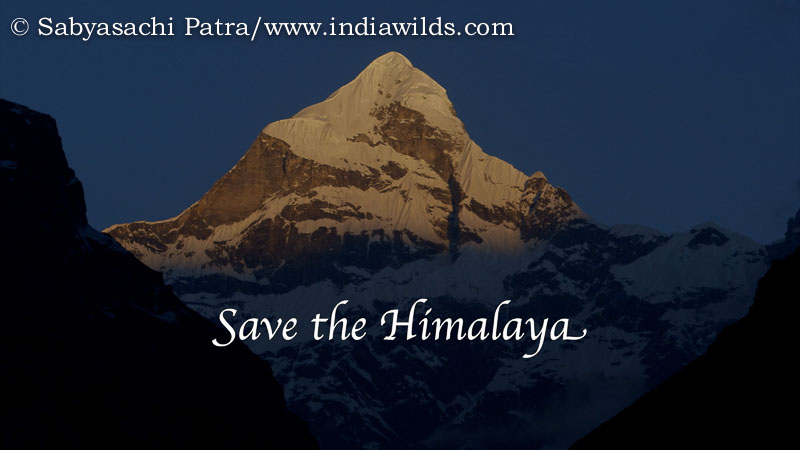
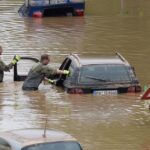
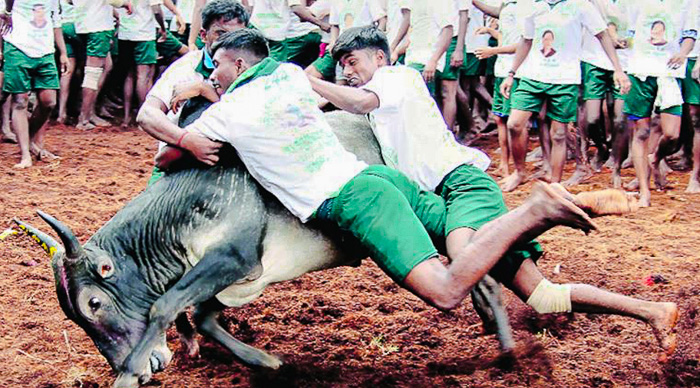


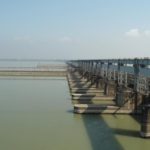
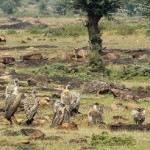



Thanks for this very informative post!
Woww you really get to travel to these places. I’m sure you must be having the best job 🙂 Loved reading it.
Haricharan
Good insights into the probable issues. Do send a letter to the concerned department or post it in the PM website. I am sure it will be debated before progress is made.